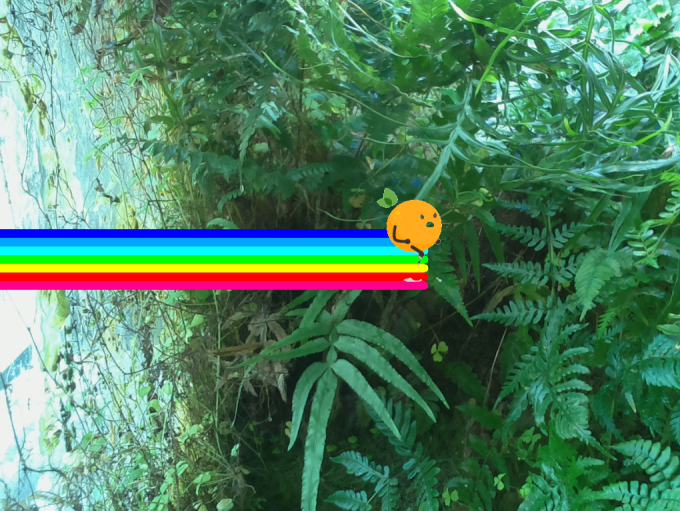import cv2 as cv2
import numpy as np
from PIL import Image
Video = "/run/media/ken/Data/Vlog/Tank_rasbbery/test.avi"
Picture = "/home/ken/Pictures/test.gif"
Width_out = int(1920*.9)
Height_out = int(1080*.9)
PB_h_r = 1- 0.05
PB_img_wr = .1
img = cv2.imread(Picture,1)
point_color = (0, 0, 255)
lineType = 8
thickness_r = 0.005
cap=cv2.VideoCapture(Video)
PB_H = int(Height_out*PB_h_r)
Video_w = cap.get(cv2.CAP_PROP_FRAME_WIDTH)
frame_total = cap.get(cv2.CAP_PROP_FRAME_COUNT)
Num = 0
thickness = int(thickness_r * Height_out)
def img_deal(img_target, img_logo, row1, row2, col1, col2, THRE):
img_logo_gray = cv2.cvtColor(img_logo, cv2.COLOR_BGR2GRAY)
print(img_logo_gray[0])
ret, img_logo_mask = cv2.threshold(img_logo_gray, THRE, 255, cv2.THRESH_BINARY)
img_logo_mask1 = cv2.bitwise_not(img_logo_mask)
img_roi = img_target[col1:col2, row1:row2].copy()
img_res0 = cv2.bitwise_and(img_roi, img_roi, mask=img_logo_mask)
img_res1 = cv2.bitwise_and(img_logo, img_logo, mask=img_logo_mask1)
img_res2 = cv2.add(img_res0, img_res1)
img_target[col1:col2, row1:row2] = img_res2[:, :]
return img_target
List = []
im = Image.open(Picture)
im.seek(1)
try:
while 1:
img = cv2.cvtColor(np.asarray(im.convert()),cv2.COLOR_RGB2BGR)
PB_img_hr = (img.shape[0]/ img.shape[1] )* PB_img_wr
PB_img_w = int(PB_img_wr * Height_out)
PB_img_h = int(PB_img_hr * Height_out)
if PB_img_h%2 == 1:
PB_img_h += 1
frame_img_h1 = PB_H -int(PB_img_h/2)
frame_img_h2 = PB_H +int(PB_img_h/2)
List += [cv2.resize(img, (PB_img_w,PB_img_h), interpolation = cv2.INTER_AREA)]
im.seek(im.tell()+1)
except EOFError:
pass
def CV_mask(img1, img2, rows1, rows2, cols1, cols2, THRE):
roi = img1[rows1:rows2, cols1:cols2]
img2gray = cv2.cvtColor(img2, cv2.COLOR_BGR2GRAY)
print(img2gray[0])
ret, mask = cv2.threshold(img2gray, THRE, 255, cv2.THRESH_BINARY_INV)
mask_inv = cv2.bitwise_not(mask)
img1_bg = cv2.bitwise_and(roi, roi, mask=mask_inv)
dst = cv2.add(img1_bg, img2)
img1[rows1:rows2, cols1:cols2] = dst
return img1
while Num <= frame_total-1:
Width = int((( Num/frame_total)*(Width_out-PB_img_w))) + int(PB_img_w*.5)
Num +=1
ptLeftTop = (0, PB_H)
img = List[int(Num%len(List))]
img = cv2.flip(img,1 )
print(Num, frame_total, Width, PB_H, print(img[0][0]))
ptRightBottom = (Width, PB_H)
ret,frame=cap.read()
frame = cv2.resize(frame, (Width_out,Height_out), interpolation = cv2.INTER_AREA)
frame = cv2.rectangle(frame, ptLeftTop, ptRightBottom, point_color, thickness, lineType)
Width_png = int((( Num/frame_total)*(Width_out-PB_img_w)))
frame = img_deal(frame, img, 0+Width_png, PB_img_w+Width_png, frame_img_h1, frame_img_h2, 207)
cv2.imshow("video",frame)
if cv2.waitKey(25)&0xFF==ord('q'):
cv2.destroyAllWindows()
break
print("Mission Down")
|









